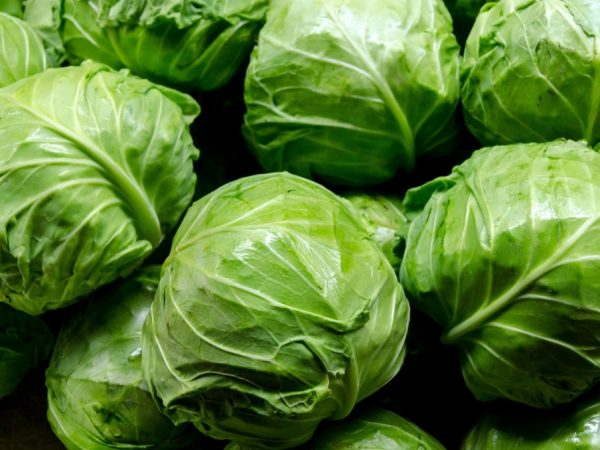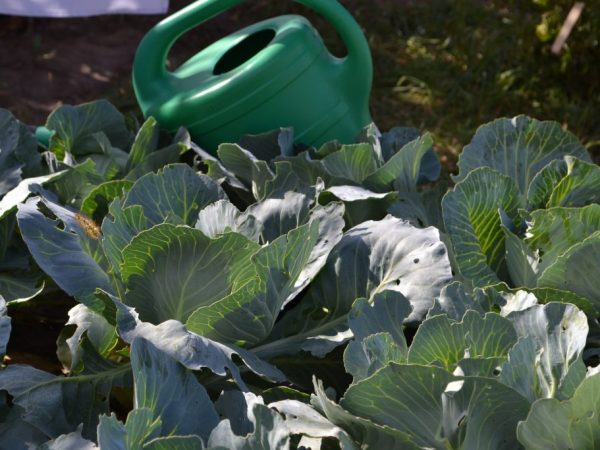Description of cabbage variety Novator
Cabbage Innovator F1 is a late-ripening high-yielding hybrid of white cabbage from the Dutch producer Syngenta. It has excellent taste and is ideal for agricultural production: it perfectly tolerates mechanical cleaning and pneumatic cleaning, retains its quality and presentation for a long time, has strong immunity. The hybrid is intended for outdoor cultivation.

Description of cabbage variety Novator
Variety characteristic
Hybrid Novator is a late variety of cabbage. Its growing season is 130-135 days. Sowing density per hectare - 30-32 thousand seeds.
According to the description, the variety has a high yield rate: from 500 centners per hectare. The shelf life is 12 months. The variety tolerates long-term transportation well. The hybrid is resistant to stress and leaf diseases, has the ability to suppress the growth of weeds, and tolerates low nitrogen content in the soil well.
Description
Cabbage Novator F1 has excellent taste, attractive presentation and long shelf life (up to 1 year).
Head structure:
- round shape, weight - from 4 to 4.5 kg;
- the surface is flat, smooth;
- high density;
- the color is dark green, white on the cut;
- leaves are thin and of medium thickness.
Growing and care
The yield of vegetables with a seedless growing method depends on the fertility of the soil and the climatic characteristics of the regions. Sowing is carried out in loamy places, small depressions or low-lying areas are also suitable. Cabbage does not like sandy and poor soil with low organic matter.
Sowing
Sowing cabbage seeds of late dates begins in May, at this time of the year the earth is already warmed up enough and you can not use the film to cover the seedlings. Before sowing, the seeds are soaked in a damp cloth for a day at a temperature of 20 ° C. It is important not to overexpose them for a long time, as the top coat may come off and the seeds will not take root in the ground. The advantage of the Novator hybrid is that its seeds are capable of rapid growth without soaking.
The soil should be leveled, holes should be made according to a 25 x 45 cm pattern, and a small amount of dolomite flour or ash should be added to each cavity. Watered several: the earth should be soaked to a depth of 15-20 cm.
3-4 pieces are sown in each hole. seeds to a depth of 1-2 cm.
Thinning
In about a week, when it will already be possible to determine by the seedlings where there are high-quality seedlings, and where are weak and small, the plants are thinned out. Leave one strong seedling at a time.
Watering and loosening

Water the cabbage as needed
Moderate watering and regular loosening is the key to a rich harvest. Before each watering, the soils are loosened, thus providing free access of air and water to the root system. It is important that the ground does not dry out and is not excessively wet. Normal soil moisture is 70%.
Top dressing
Plants need feeding. The first is carried out 2 weeks after the emergence of shoots, the second - during the appearance of the head ovary. As a fertilizer, preparations based on potassium, phosphorus and nitrogen are used.
Organic fertilizers are also used: manure or bird droppings. For 1 sq. m use 300-500 g of manure or 600-800 g of bird droppings.
Harvesting
Harvesting late-ripening cabbage begins in September and lasts until the first frost. The Zenon hybrid is frost-resistant, but so that it can maintain its presentation and taste for a long time, frostbite should be avoided. Cabbage can withstand frosts down to -5-6 ° C.
Rules for collecting cabbage for long-term storage:
- Harvested on sunny autumn days.
- Dug out, cleaned from the ground (the head of cabbage is not cut off).
- Small and damaged plants are sorted out.
- Separate the leaves, leaving 2-3 integumentary leaves.
- Fold into a hinged shelter to dry.
- Whether the roots are cut or left, it depends on the storage method.
- Moved to storage.
Pests
The most common pests and control of them:
- Cruciferous fleas. Mix hexachloran (12%) and DDT, process at the rate of 10-15 g per 10 sq. m.
- Cabbage fly. Sprinkle the soil with a mixture of naphthalene and sand (1: 7) or lime and tobacco dust (1: 1).
- Cabbage moth, scoop, whitefish. Treat plants with calcium arsenate at the rate of 12 g for every 100 sq. m.
- Cabbage aphid. Treat with a solution of anabazine sulfate (0.2%) in the amount of 500 ml per 10 sq. m.
Conclusion
Innovator F1 is a late-ripening hybrid of white cabbage, universal in use. The hybrid has a high yield and at the same time is unpretentious in care. It is intended for sowing in open ground, suitable for mechanical harvesting, pneumatic cleaning and transportation, has a long shelf life (up to 1 year), is resistant to diseases (fusarium, necrosis), is capable of suppressing the growth of weeds and tolerates low nitrogen content in the soil well.

